Hair Transplant in Delhi
Search and Compare the Best Clinics and Doctors at the Lowest Prices for Hair Transplant in Delhi
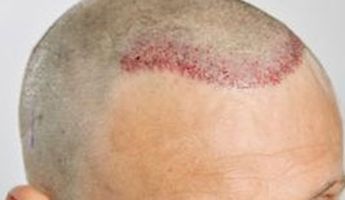
Find the best clinics for Hair Transplant in Delhi
With Medijump you can browse 23 facilities offering Hair Transplant procedures in Delhi. The cheapest price available is $136 in Pune
Hair Transplant in India
Price: $ 136
Hair Transplant in Pune
Price: $ 136
Hair Transplant in Mumbai
Price: $ 327
Egypt offers the best prices Worldwide
Price: $ 126
Richfeel Trichology Centre - Delhi, located in New Delhi, Delhi, India offers patients Hair Transplant procedures among its total of 4 available procedures, across 1 different specialties. Currently, there's no pricing information for Hair Transplant procedures at Richfeel Trichology Centre - Delhi, as all prices are available on request only, whilst the national average price is approximately $618. All procedures and treatments are undertaken by just a small team of specialists, with 2 in total at the Hospital, and they are not accredited by any recognized accreditations institutes
Aestiva Clinic-Saket Clinic, located in New Delhi, Delhi, India offers patients Hair Transplant procedures among its total of 18 available procedures, across 4 different specialties. Currently, there's no pricing information for Hair Transplant procedures at Aestiva Clinic-Saket Clinic, as all prices are available on request only, whilst the national average price is approximately $618. All procedures and treatments are undertaken by the lead specialist at the Clinic, and they are not accredited by any recognized accreditations institutes
Dr. Dutt Hair Transplant Center, located in New Delhi, Delhi, India offers patients Hair Transplant procedures among its total of 11 available procedures, across 3 different specialties. Currently, there's no pricing information for Hair Transplant procedures at Dr. Dutt Hair Transplant Center, as all prices are available on request only, whilst the national average price is approximately $618. All procedures and treatments are undertaken by just a small team of specialists, with 2 in total at the Hospital, and they are not accredited by any recognized accreditations institutes
Compare Before & After Photos of _procedure_photos.phpHair Transplant
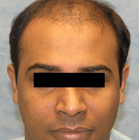
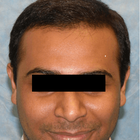
Front view
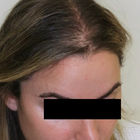
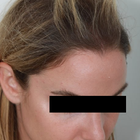
Half-side view
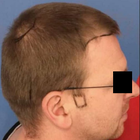
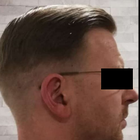
Full-side view
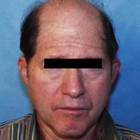
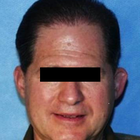
Front view
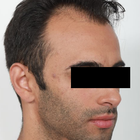
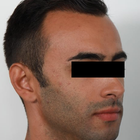
Half-side view
WHY US?
At Medijump, we're making medical easy. You can search, compare, discuss, and book your medical all in one place. We open the door to the best medical providers worldwide, saving you time and energy along the way, and it's all for FREE, no hidden fees, and no price markups guaranteed. So what are you waiting for?

Free

Best Price

Widest Selection

Risk-Free
What you need to know about Hair Transplant in Delhi

Hair Transplantation, also known as hair restoration surgery, is the surgical process of moving hair follicles from one part of the body that is rich in hair (known as a donor site) and embedding them at the the bald area of the head (recipient site). The medical course of action that aims at addressing hair loss issues and improving aesthetics. While there are many causes of hair loss, the most common reason, especially for men, is genetics. Hereditary hair loss as men age is the number one leading factor of baldness.
It is a minimally invasive procedure, performed under local anesthetic and is most commonly used to treat male baldness, but the technique can also be used to restore eyelashes, eyebrows, beard hair and to fill in scars. The procedure usually lasts between 4 to 8 hours, depending on the number of grafts needed. This procedure is a long-term solution to hair loss, with most patients experiencing significant improvement in hair growth after six months to a year.
Why do people experience hair loss?
We lose an average of 100 hairs a day, however, these hairs are immediately replaced by new hairs growing at the same time. Hair loss can occur suddenly or gradually and it may affect your scalp or your entire body, depending on what’s causing it. Other causes of hair loss may include:
- Stress - a lot of people may experience hair thinning for several months due to a physical or emotional shock. However, this type of hair loss is only temporary.
- Certain Hairstyles and treatments - hairstyles that pull your hair like tight pigtails, ponytails or braids can actually cause traction alopecia. Permanent hair treatments and hot oil treatment may also lead to hair loss; these hair treatments cause inflammation to the hair follicles. If there is scarring, hair loss may be permanent.
- Radiation Therapy - for example, during cancer treatment.
- Certain medical conditions and hormonal changes - in women, hormonal changes due to pregnancy, childbirth menopause or thyroid problems may cause temporary or permanent hair loss. As for medical conditions, hair loss may be due to alopecia, scalp infections like ringworm or a hair-pulling disorder known as trichotillomania.
Sudden hair loss may also be a sign of a specific medical condition that will require treatment. You will need to consult your doctor if you experience more than your usual hair loss whenever you are combing or washing your hair and also if you encounter a sudden patchy loss of hair.
A hair transplant is a common treatment performed on people who are experiencing baldness due to aging and heredity factors. However, if you are completely bald with absolutely no hair left, then this type of treatment may not be applicable for you, as you won't have sufficient donor hair to supply.
What is the cost of Hair Transplant in Delhi?
The cost of Hair Transplant in Delhi is typically influenced by various factors. These may include the experience and reputation of the surgeon, the complexity of your case, and the total number of grafts needed. Moreover, the pricing strategy followed by the medical establishment also plays a significant role. Some clinics charge based on the number of grafts transplanted, while others might price the procedure as a package. The exact price can therefore only be determined in consultation with a trusted clinic. While it can appear costly to some, the Hair Transplant is an investment in one's appearance and self-confidence.
What Does The Procedure Involve?
The hair transplant procedure involves taking hair from your Donor Site and transferring it to the area(s) lacking in hair, the Recipient Site, and a local anesthetic will be applied before the procedure begins to limit any discomfort.
There are two main methods used in a hair transplant procedure:
- Follicular Unit Transplantation (FUT) - strips of tissue will be removed from your donor area, these strips will be cut into individual follicular units. Small cuts will be made on your scalp where the follicular unit grafts will be placed. This method is becoming less popular.
- Follicular Unit Extraction (FUE) - individual hair follicles will be directly extracted from your donor area and moved to your recipient site using a specialist microsurgical needle. FUE is now the preferred technique for hair transplants as it will not leave a linear scar at the back of the head.
Procedures are undertaken by a fully qualified technician and usually involve the extraction of around 3,000 grafts, going up to 4,000. Any more, and it will likely require two separate sittings to complete.
How Long Should I Stay in Delhi for a Hair Transplant Procedure?
Hair transplants are usually performed as an outpatient procedure. Thus, you will be able to go back to your hotel immediately after. Both methods used for Hair Transplant treatments usually take 4-8 hours to complete. With FUE technique, there are no stitches or staples to be removed, so you won't need to stay in Delhi for long after the procedure, just allow a day or two to be sure before traveling home.
You should expect to pay the clinic another visit the day after the treatment so the doctor can remove the bandage, examine the areas of intake and transplantation of follicles, before washing your hair using a special technique that you will learn to perform by yourself. Finally, the doctor will provide you with a special shampoo that will help to restore the skin.
What's the Recovery Time for Hair Transplant Procedures in Delhi?
Your scalp will continue to be sensitive to pain for a few days, during which time you should continue to take the medications provided by the doctor. On top of the pain killers and anti-inflammatory meds, you may also be given antibiotics to lessen the risk of infection, as uncommon as this may be.
You should expect to return to work and your daily routine, including exercise, after 5 days. However, the signs of a hair transplant will remain for at least another 2-3 weeks, at which point the newly transplanted hairs will start to fall out - but don't be alarmed! This is to be expected as you've just had a follicle extraction, so dead hair will simply make way for new hair over the coming weeks and months.
If the average person's hair only grows at a centimeter per month, then it will take some time before you can wear your hair long again. You could expect to display short and consistent hair just 4-6 weeks after the treatment.
What sort of Aftercare is Required for Hair Transplant Procedures in Delhi?
After the procedure is complete, anti-swelling medication and painkillers will be available and you'll be provided with various essentials to see you through the days immediately following. Post-op items may include; specialist shampoo, lotion, multivitamins, a special hat, a headband, neck pillow, and wound dressing.
Having already been provided with your post-op aftercare products, you may also be offered Platelet Rich Plasma (PRP) Therapy to help stimulate the hair follicles and encourage hair growth. This is where a small amount of blood is taken, rich in plasma, which is then injected into the Recipient Site.
What's the Success Rate of Hair Transplant Procedures in Delhi?
The success rate for hair transplants is one of the highest, at 98% and is considered the only truly effective remedy for hair loss.
The effectiveness of Hair Transplant treatments is significantly shaped by the surgeon's expertise who executes the process. A seasoned and competent surgeon employs sophisticated methods to prevent harm to the transplanted hair follicles during the process, which leads to a higher likelihood of success. Additionally, the ability of the surgeon to place the grafts in an attractive manner that resembles natural hair growth further enhances the perceived successfulness of the result.
Beyond the competency of the surgeon, the overall health status and lifestyle choices of the patient greatly impact the treatment's effectiveness. Subpar habits such as excessive smoking and alcohol intake can obstruct the recovery process and influence the result adversely. Illnesses like diabetes can also interfere with the likelihood of success.
Consideration of the donor hair's quality is another aspect that may affect the success of the procedure. Generally, those with robust, plentiful hair in the donor region have a higher success rate as compared to individuals with sparse or poor-quality hair. The availability of more follicles for transplantation yields better results. A detailed examination is carried out before the Hair Transplant to verify the quantity and quality of the donor's hair.
Are there Alternatives to a Hair Transplant?
Laser therapy is one alternative to a hair transplant. During this procedure, a low-level laser device will be used as a treatment for a hair loss specifically caused by genetics. This low-level laser with a wavelength of 650 nanometres can actually stimulate your hair growth. However, long term effects for this type of alternative still remains uncertain.
PRP Therapy is another alternative you can consider. This type of treatment will make use of your own blood to promote hair growth. Your blood will be spun in a centrifuge to separate your blood’s plasma component from your red and white blood cells. Plasma contains many growth factors that promote hair growth when injected into the scalp.
Other non-surgical alternatives could include simply shaving all your hair off, trying other hairstyles or using a wig or hairpiece.
How do FUT and FUE Compare?
The two most common techniques used are the Follicular Unit Transplant (FUT) and the Follicular Unit Extraction (FUE). How do they compare?
1. FUT, also referred to as FUSS (Follicular Unit Strip Surgery), involves the removal of a strip of skin from the back of the head containing lots of hair follicles, which is stitched up and hidden by the surrounding hair. Then the strip of follicles is divided into 500-2,000 tiny grafts containing just a few hairs. These are then embedded across the bald area of the head.
2. FUE does not require a strip of skin to be removed, instead, the hair follicles are individually removed from the donor site and positioned across the bald area in tiny slits created by a scalpel or needle.
What are the Risks Associated with Hair Transplant?
Like any surgical procedure, Hair Transplant carries certain risks, although they are relatively rare and usually minor if performed by a skilled and experienced surgeon.
Some potential risks and side effects could include:
- Scarring is the most common side effect (only applicable to FUT)
- Infections
- Temporary loss of sensation around the surgical sites
- Inflammation of hair follicles (folliculitis)
- Temporary scalp pain, itching, and swelling.
- Unnatural-looking hair growth
Whilst the information presented here has been accurately sourced and verified by a medical professional for its accuracy, it is still advised to consult with your doctor before pursuing a medical treatment at one of the listed medical providers
No Time?
Tell us what you're looking for and we'll reachout to the top clinics all at once
Enquire Now

Popular Procedures in Delhi
Prices Start From $153

Prices Start From $500

Prices Start From $4

Prices Start From $500

Recommended Medical Centers in Delhi for Hair Transplant

- Interpreter services
- Translation service
- Religious facilities
- Medical records transfer
- Medical travel insurance
- Health insurance coordination
- TV in the room
- Safe in the room
- Phone in the room
- Private rooms for patients available

- Interpreter services
- Translation service
- Religious facilities
- Medical records transfer
- Medical travel insurance
- Health insurance coordination
- TV in the room
- Safe in the room
- Phone in the room
- Private rooms for patients available

- Interpreter services
- Translation service
- Religious facilities
- Medical records transfer
- Medical travel insurance
- Health insurance coordination
- TV in the room
- Safe in the room
- Phone in the room
- Private rooms for patients available

- Interpreter services
- Translation service
- Religious facilities
- Medical records transfer
- Medical travel insurance
- Health insurance coordination
- TV in the room
- Safe in the room
- Phone in the room
- Private rooms for patients available

- Interpreter services
- Translation service
- Religious facilities
- Medical records transfer
- Medical travel insurance
- Health insurance coordination
- TV in the room
- Safe in the room
- Phone in the room
- Private rooms for patients available

- Interpreter services
- Translation service
- Religious facilities
- Medical records transfer
- Medical travel insurance
- Health insurance coordination
- TV in the room
- Safe in the room
- Phone in the room
- Private rooms for patients available

- Interpreter services
- Translation service
- Religious facilities
- Medical records transfer
- Medical travel insurance
- Health insurance coordination
- TV in the room
- Safe in the room
- Phone in the room
- Private rooms for patients available

- Interpreter services
- Translation service
- Religious facilities
- Medical records transfer
- Medical travel insurance
- Health insurance coordination
- TV in the room
- Safe in the room
- Phone in the room
- Private rooms for patients available

- Interpreter services
- Translation service
- Religious facilities
- Medical records transfer
- Medical travel insurance
- Health insurance coordination
- TV in the room
- Safe in the room
- Phone in the room
- Private rooms for patients available

- Interpreter services
- Translation service
- Religious facilities
- Medical records transfer
- Medical travel insurance
- Health insurance coordination
- TV in the room
- Safe in the room
- Phone in the room
- Private rooms for patients available
Hair Transplant in and around Delhi
Introduction
Delhi is officially known as the National Capital Territory of Delhi (NCT). It is home to the capital of India, New Delhi. With a population of over 18 million, it is the second most populous city in the country. The city is brimming with vibrant modern life but also still steeped in history. People come to the city for its cultural richness and gastronomic scene.
Recently, Delhi has emerged as a medical tourists’ favorite destination. It’s the perfect place for those who seek low cost high-quality, world-class healthcare. India continues to expand its medical tourism sector with Delhi as one of the top hubs for medical facilities. Among the leading hospitals in Delhi are Max Super Specialty Hospital, Apollo Hospital Indraprastha, and BLK Super Specialty Hospital. Breast Augmentation and heart surgery procedures are two of the most popular procedures in the city. Patients come to Delhi for the following reason:
- State of the art medical facilities with international and local accreditation
- Skilled doctors, many of which trained in the UK
- English speaking doctors and staff
- Wide range, cost-effective procedures
- Traditional healthcare therapies and practices such as Ayurveda and yoga
Popular Areas in Delhi
Delhi is overflowing with enchanting history and colorful modern life. The city is made of layers of history, temples, monuments, markets, and UNESCO World Heritage Sites. Many tourists come to witness its charm and discover its hidden treasures. Go to Old Delhi and visit the Red Fort where a load of people fell in love with its beautiful structure influenced by Islamic, Persian, Hindu, and Timurid traditions. Learn Islamic history in one of the largest mosque in India, Jama Masjid. Shop in Chandni Chowk Market, the largest shopping hub in Delhi. Pay your respect in Raj Ghat, a memorial dedicated to Mahatma Gandhi.
There is also New Delhi, India’s capital, where you can stroll around India Gate, a war memorial that was inspired by the Arc de Triomphe. Humayun’s Tomb, the tomb of the Mughal Emperor Humayun, is also worth a visit for anyone who loves history. Don’t forget to go to the Gandhi Museum (Gandhi Smirti) to learn more about the leader of Indian independence’s life. Tourists can also visit an enthralling historical site known as Purana Qila. In your spare time, you can shop in Janpath Market and Sarojini Market.
South Delhi has many sites to enjoy such as the unique Lotus Temple, the soaring tower of victory Qutab Minar, and the thriving nightlife of Hauz Khas Village. This district also has a famous shopping paradise including Dilli Haat, Shahpur Jat, GK 1 N-block market, and Dastkar Nature Bazaar.
Weather and Climate in Delhi
Delhi has a high variation of temperature between summer and winter. Summer in Delhi can get really hot with an average temperature of around 32°C. The season starts in April to June and the temperature can reach as high as 46°C. It is advisable to avoid this season if you’re planning to do a lot of outdoor activities. The monsoon starts in late June to mid-September. The temperature usually falls to an average of 29°C, but it’s rainy and humid.
The temperature plummets during winter, ranging between 6°C to 7°C. This season starts in November and lasts until March. October to March is the best time to visit Delhi because the weather is neither too hot or too cold.
Getting Around in Delhi
Indira Gandhi International Airport, located 16 km from New Delhi city center, is the busiest airport in India. This airport serves domestic and international flights that connect the city with almost every country across the globe. Terminal 1 is used by budget airlines such as IndiGo and SpiceJet, while Terminal 3 is mainly used for international operations and several domestic flights.
The city center can be reached by bus, airport taxi, and metro. The bus is the most affordable option although it can be very crowded. Taxi is a good way to travel but always use licensed taxis such as WTi Cabs, Meru, and Mega Cabs. App-based taxis like Ola and Uber is another choice of travel. The fastest way to travel to Delhi’s city center is by The Delhi Metro. The travel time is less than 25 minutes and should cost around 10 INR to 60 INR.
There are several transportation modes to get around Delhi. The Delhi Metro is the best option to travel around because it offers comfort and fast travel. Taxis are widely available in the city. The easiest way to call a taxi is by the Ola app. It’s usually cheaper to use Ola than a local taxi stands.
For shortstops, opt for auto rickshaws. They’re affordable and easy to find. Make sure to negotiate the fare before getting in because most drivers will refuse using the meter. The drivers are also known to overcharge foreign visitors. Driving around Delhi is not recommended since the traffic can be time-consuming and there is a lot of bad driving. You can always hire a local driver if you want to get around by car.
Tourist Visas in Delhi
Citizens of Nepal and Bhutan can enter India without a visa. Citizens of Japan and South Korea can apply for a visa on arrival. Citizens of 150 countries can apply for e-Visa which is valid for 60 days. There are medical and medical attendant e-visas for tourists who come for healthcare. Other nationalities are required to apply and obtain a visa before entering the country.
All visitors must hold a passport valid for at least 180 days after their entry to India and should have at least two blank pages.
Additional Information
- Local Currency: the official currency is the Indian rupee (INR). 1 USD converts to 70 INR.
- Money & Payments: Major currencies such as US dollars, euros, and pounds sterling are easy to change throughout the city. The easiest way to exchange money is by using ATMs. Some shops, restaurants, and hotels will accept credit cards. It is advisable to always carry cash since a lot of places still accept cash only. Restaurants sometimes add a 10% service fee to the bills.
- Local Language: Hindi is the official language of Delhi. Urdu and Punjabi are widely spoken. Most people will be familiar with English. Many young people shop keepers, and tour guides can speak English very well.
- Local Culture and Religion: The major religion is Hinduism, followed by Islam, Christianity, Sikhism, Jainism, Buddhism, and Judaism.
- Public Holidays: The city celebrates major religions (Hindus, Muslims, and Christians) holidays. The city hosts many festivals all year round such as The Grub Fest, The Palate Fest, and Holi Festival.
Popular Searches
- Plastic Surgery in Thailand
- Dental Implants in Thailand
- Hair Transplant in Thailand
- Breast Augmentation Thailand
- Gastric Sleeve in Thailand
- Gender Reassignment Surgery in Thailand
- Laser Hair Removal in Bangkok
- Botox in Bangkok
- Dermatology in Bangkok
- Breast Augmentation in Bangkok
- Coolsculpting in Bangkok
- Veneers in Turkey
- Hair Transplant in Turkey
- Rhinoplasty in Turkey
- Stem Cell Therapy in Mexico
- Rhinoplasty in Mexico
- Liposuction in Mexico
- Coolsculpting in Tijuana
- Rhinoplasty in Korea
- Scar Removal in Korea
- Gastric Sleeve in Turkey
- Bone Marrow Transplant in India
- Invisalign in Malaysia
- Plastic Surgery in the Dominican Republic
- Tummy Tuck in the Dominican Republic
- Plastic and Cosmetic Surgery in Poland
- Rhinoplasty in Poland
- Hair Implant in Poland
- Dental Implants in Poland
- IVF in Turkey

